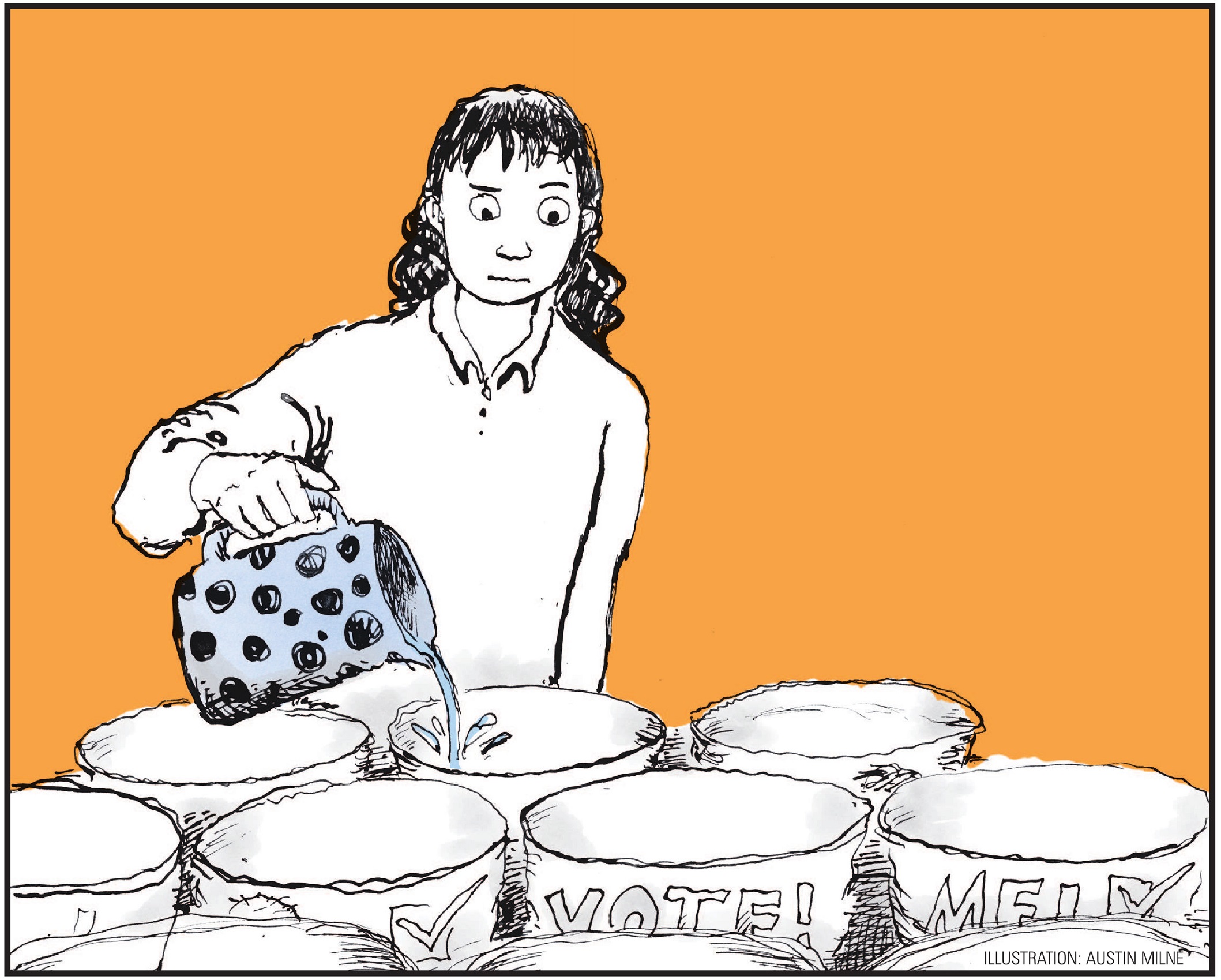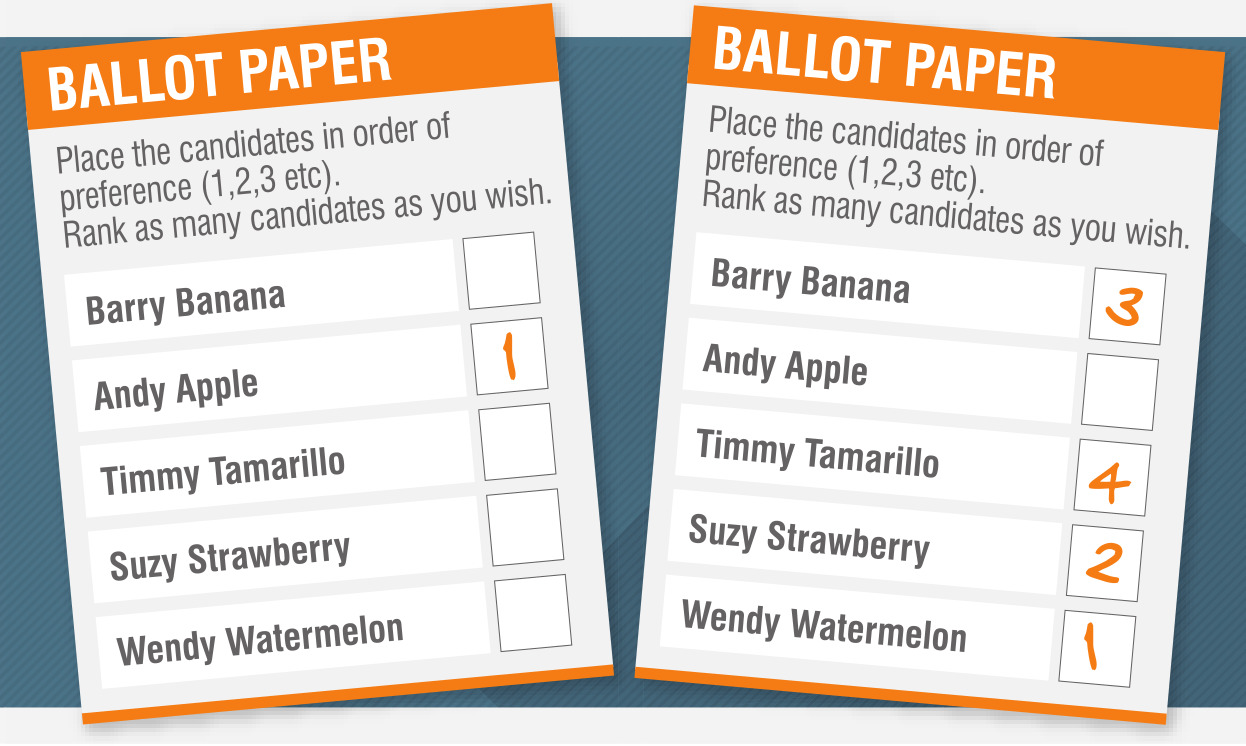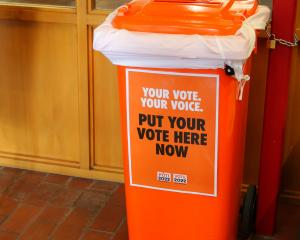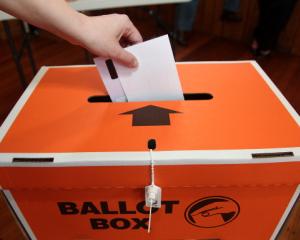
1. That you need to rank everyone ... you don’t.
2. That you need to rank as many candidates as there are representatives to be elected ... you can rank as many or as few candidates as you want.
3. That STV is complicated ... it doesn’t have to be. Who would you like to be mayor or councillors, and in which order do you like them? Write that down.
"The most important thing to emphasise when it comes to voting using STV is make sure you rank in order all the people you would positively like to see elected," Prof Geddis, from the University of Otago, says.
Advice abounds that it is best to rank as many councillors as you are comfortable helping to elect. Asked if this was good advice for most voters, Prof Geddis responded with "yes", in bold and followed by three exclamation marks.
The sequence is crucial.
In the mayoralty contest: 1, or 1-2, or 1-2-3 . . .
In the council contest: 1, or 1-2, or 1-2-3 . . . or 1-2-3-4-5-6-7-8 . . .
Any break in that sequence makes whatever follows invalid.
Someone who puts 1 next to a series of candidates in a council race has, in reality, not voted. Someone who votes 1-2-3-4-4 . . . has their first three preferences taken into account and nothing thereafter. Skipping a number renders the rest invalid.
The system
STV, or the single-transferable vote system, has been used in Dunedin City Council elections since 2004.
It is regarded as a proportional-representation system, generating a sort of consensus around who should be elected to council.
A key point about the mayoralty is the winner ends up with majority support. The race is over when a candidate clears 50%.
A vote for mayor may well transfer between candidates in line with a voter’s preference ordering, depending on who remains in the race, but it will end up in the column of only one candidate. If the race is close and the STV calculator is required to produce its maximum workload, the votes will end up in the columns of either the winner or the runner-up.
As a consequence, the winner is the "most preferred" of all the candidates, Prof Geddis says.

But why?
Former Local Government Commission senior adviser Gavin Beattie says it is best to think of the system as distributing a single vote between candidates according to each voter’s preferences, even in the council race.
It is fundamentally fairer than the first-past-the-post (FPP) system, because all voters have a better chance of electing their preferred candidate or candidates, he says.
"In addition, votes are not wasted by voting for candidates who are either popular enough not to need all the votes they receive in order to be elected, or who are not popular enough to get elected. In these cases votes are transferred, partially in the case of candidates already with enough votes to be elected, to the voter’s next preference."
Water analogy
Prof Geddis likes to explain the race for council seats by using an analogy of pouring water into basins.
Let’s say one vote is 1 litre.
For a council candidate to be elected, they must receive a set amount of water from all the voters (let’s say 1000 litres).
"So, your vote (jug of water) first gets poured into the basin of the candidate you rank 1.
"If that candidate has received enough first preferences from other voters to be elected (say, 2000), then the portion of your vote (the amount of water) needed to help them reach the minimum amount to be elected stays with them while the remainder (the leftover water) flows on down to your lower preferences.
"So, half your vote (500ml of water) will remain with the candidate you ranked 1, with the other half flowing on to the candidate you’ve ranked 2.
"If they get enough votes to get elected, then the portion of your vote needed to help them do so stays with them, while the remainder flows on to the candidate you ranked 3 . . . and so on down the chain."
The way the vote flows on to various council candidates depends on the extent to which they need additional support, or is redistributed if they are not in the hunt.
An FPP mindset?
University of Otago politics professor Janine Hayward studies voting patterns.
Not many people have their votes discarded because forms are filled out incorrectly, she says.
Prof Hayward says Dunedin data shows a massive spike in the number of people who vote for 14 council candidates, which reflects the number of positions available.

There is also a hard core of people who rank everyone on the list, she says. More on that below.
Does having several mayoralty candidates of a similar flavour split the vote?
No. That is what happens under first-past-the-post, not STV.
For example: Five voters may give Candidate Apple a "1" ranking and rank nobody else. Ten voters may each share three preferences around Orange, Mandarin and Lemon, in varying orders, and give nothing to Apple. One of the citrus candidates will win.
Vote how you feel
Under STV, there is no incentive to vote in any way other than according to a voter’s true preferences for the candidates on the voting paper, Mr Beattie says.
This understanding is based on the fact votes are always allocated in order, firstly to a voter’s first preference, and then it can be transferred to their second preference, and then to their third preference, and so on. In this way, a voter’s lower preference for a particular candidate can never override that voter’s higher preference.
What about tactical voting?
Does a strategy of 1. Apple, 2. Banana, 3. Strawberry, 4. Pear . . . 20. Tomato, 21. Cucumber . . . 37. Lemon, 38. Lime, 39. Mandarin . . . really harm the chances of citrus candidates, and particularly Orange (left off entirely)?
"Probably not," Prof Geddis says.
"The chances of much of your vote (much of the water) still carrying through by the time you’re down to the last 10-or-so candidates out of 40 is pretty minimal.
"However, there may be some personal pleasure in a voter being able to rank a candidate dead last — this information does come through in the election statistics."
If someone (for council) gets zero first preferences, but a lot of second preferences, they are still in the race, right?
"Absolutely," Prof Geddis says.
"Their vote basin still can be filled by the flow-over votes from both successful and unsuccessful first-preference candidates."
The upshot
Here is what voters need to think about: Who do you like the most? Who is your next-favourite candidate? And on it goes, to the extent each voter wants it to.
For the mayoralty, the most-preferred candidate is elected. What we might end up with on the council is a balanced diet of successful candidates, if that is what voters choose.












